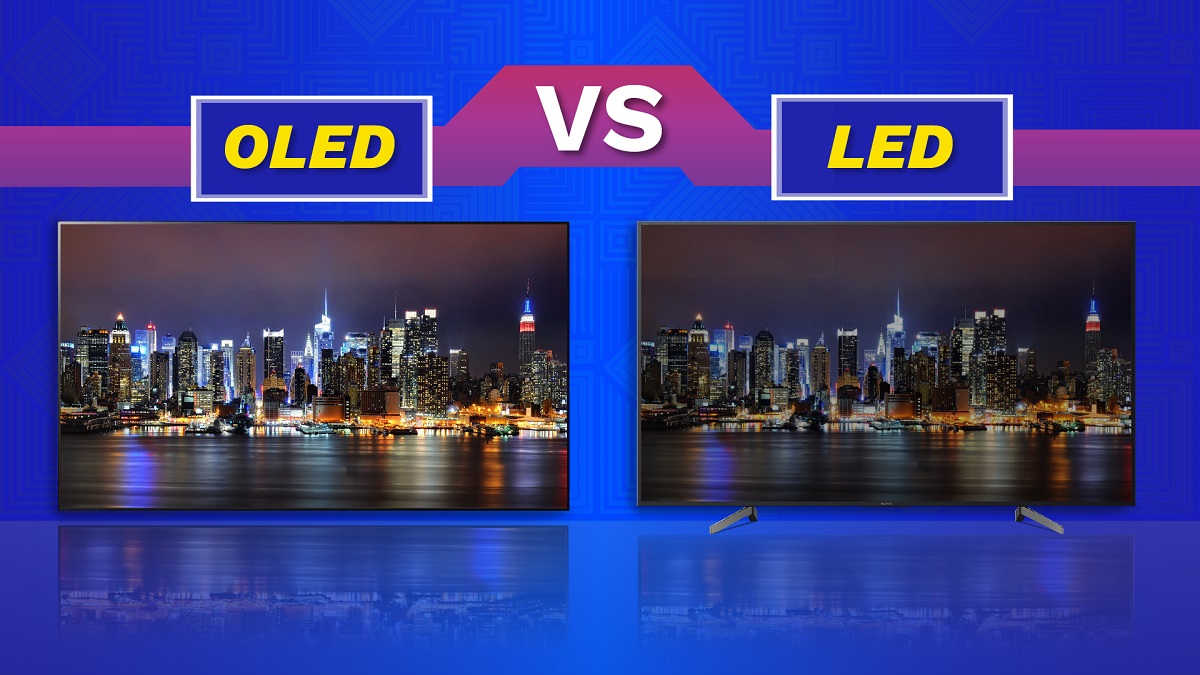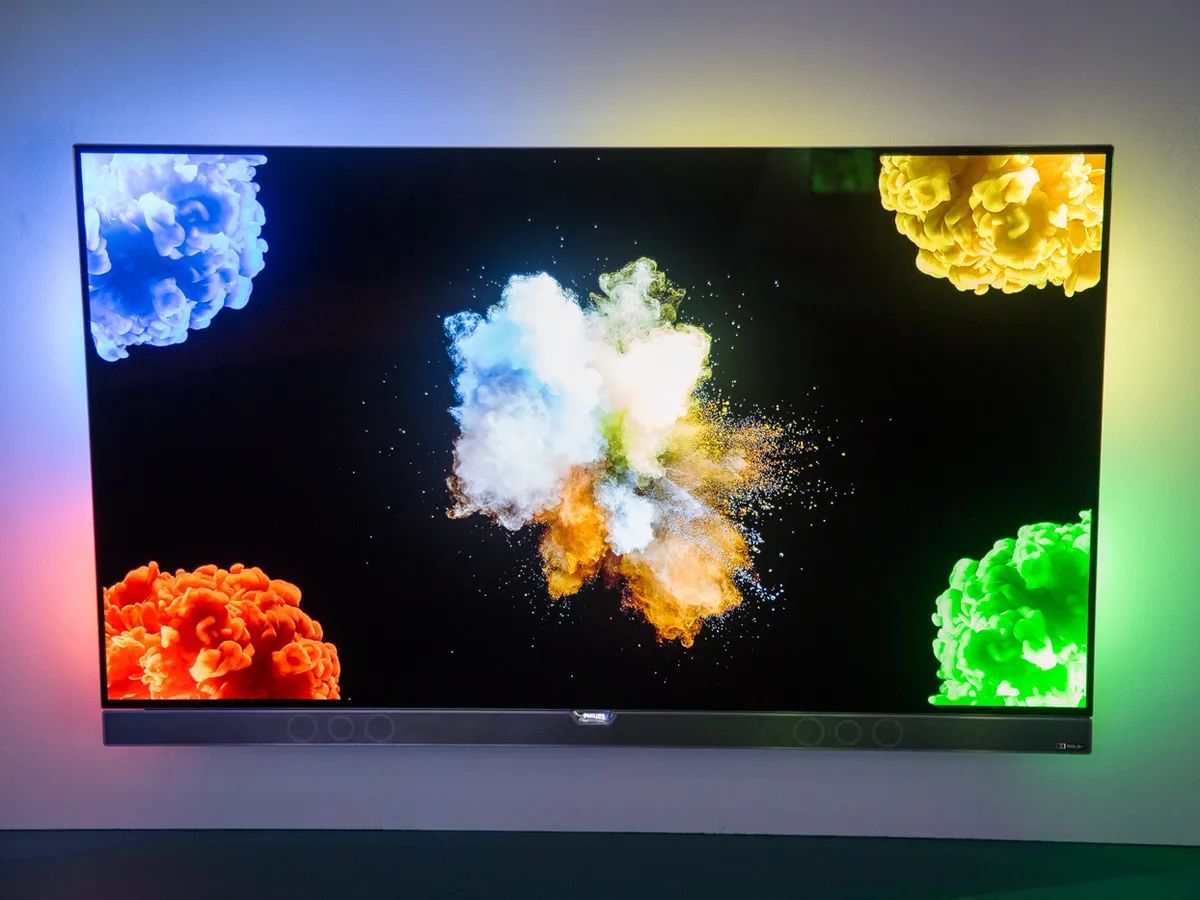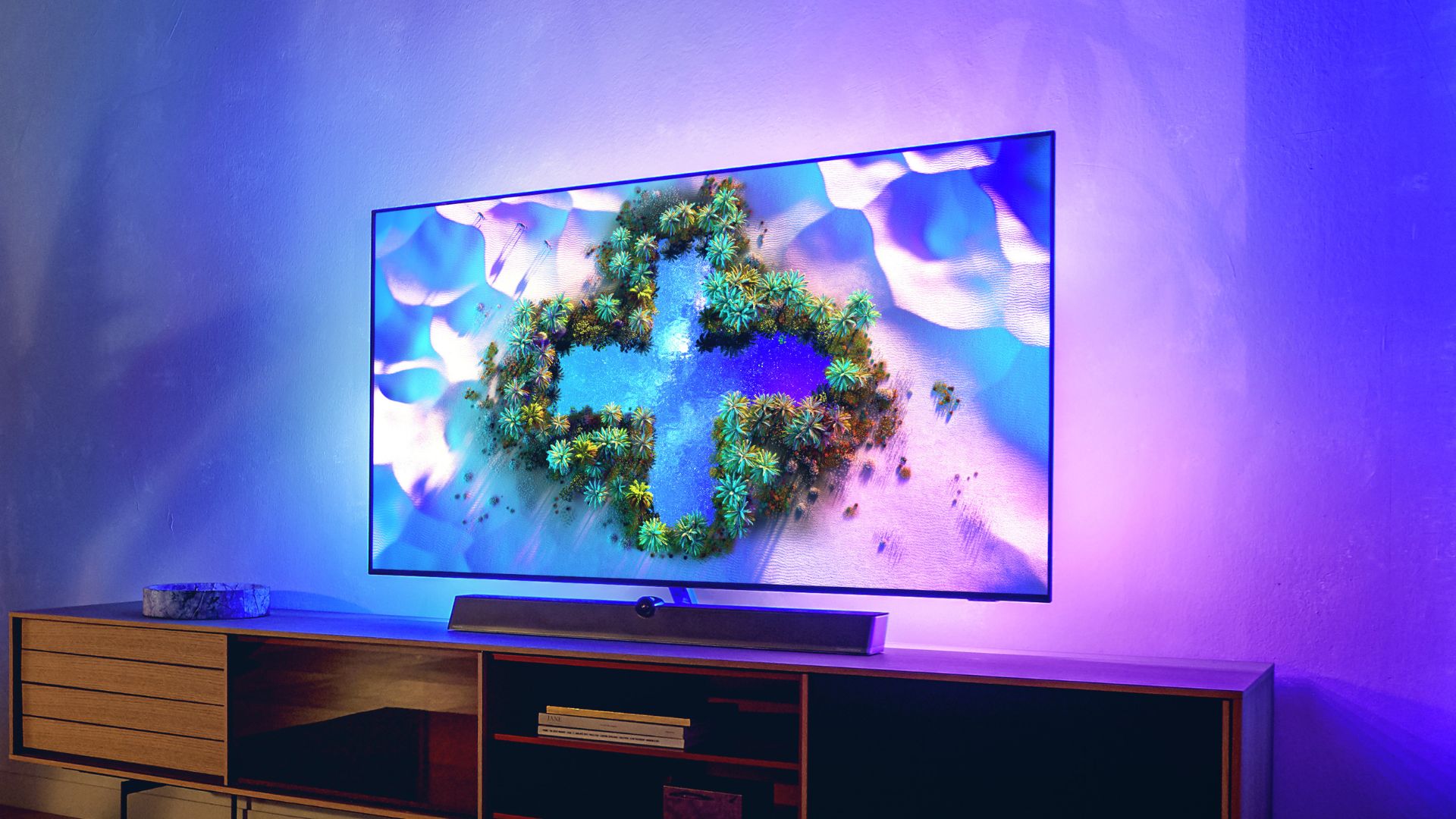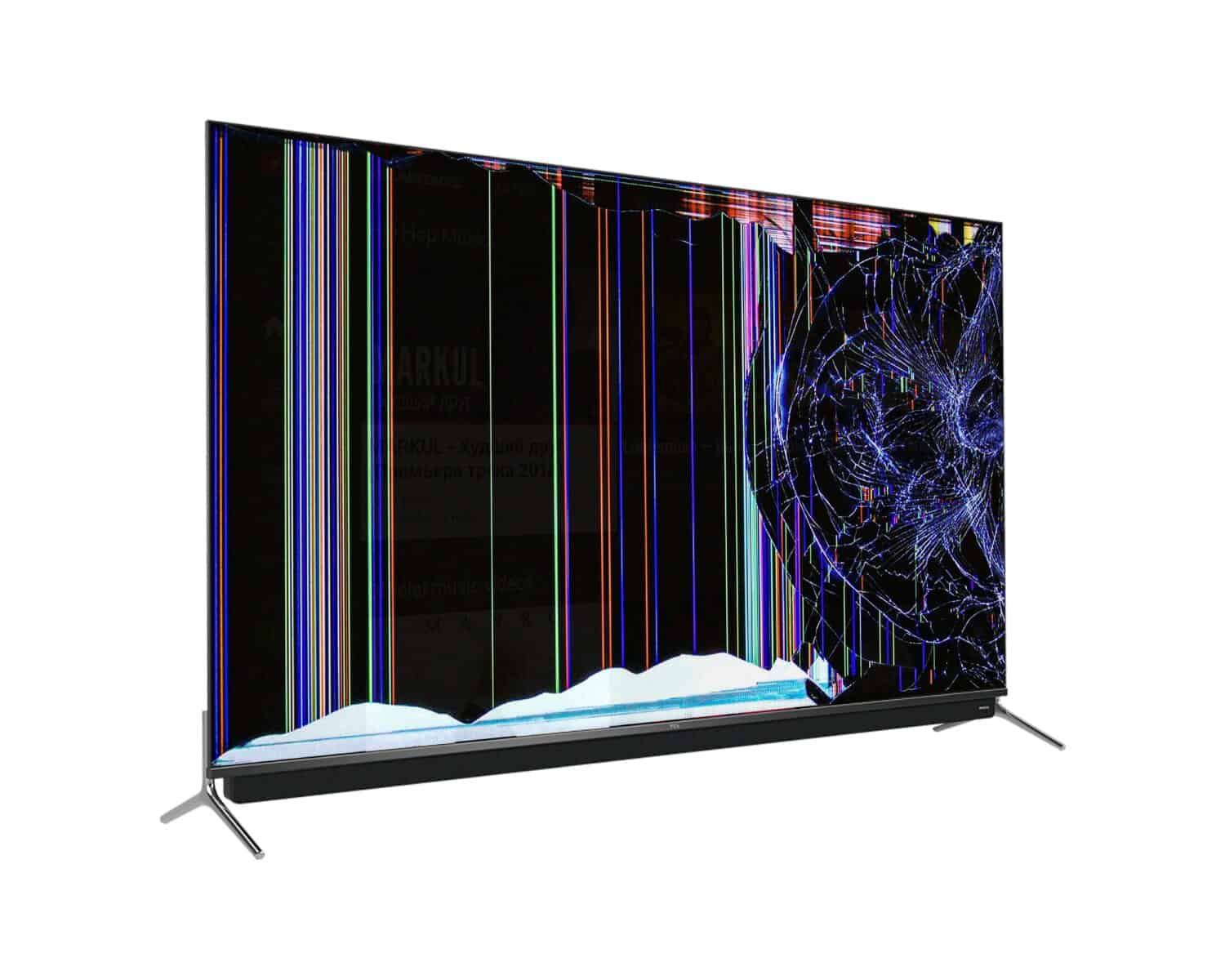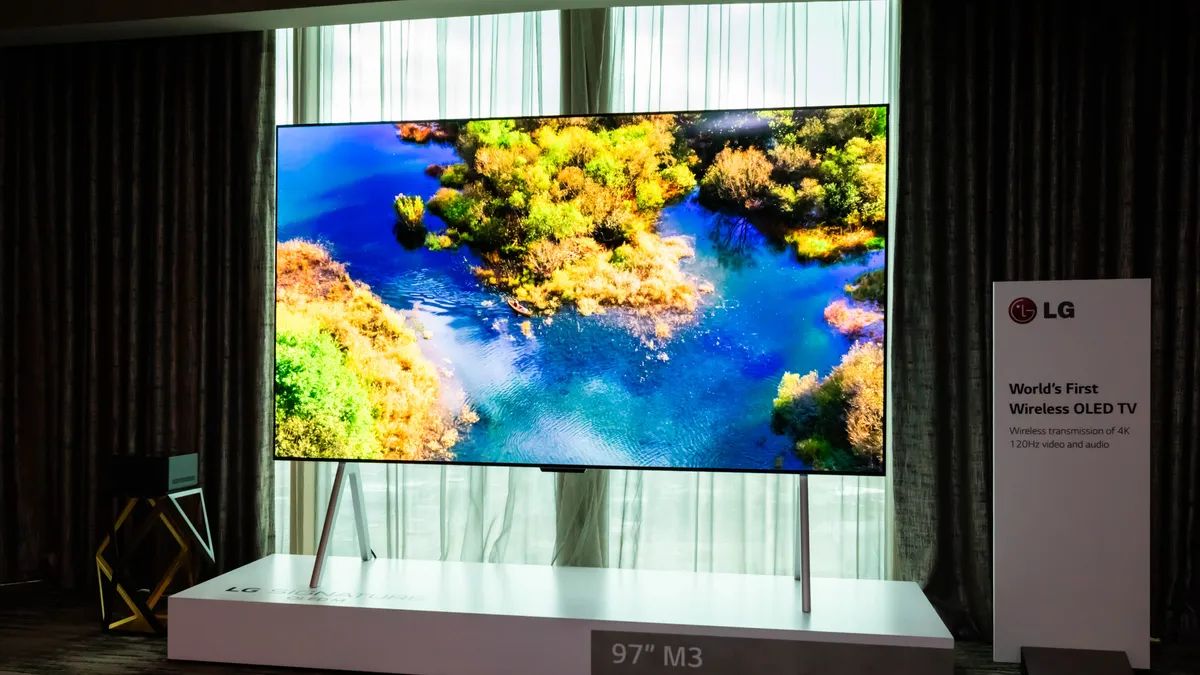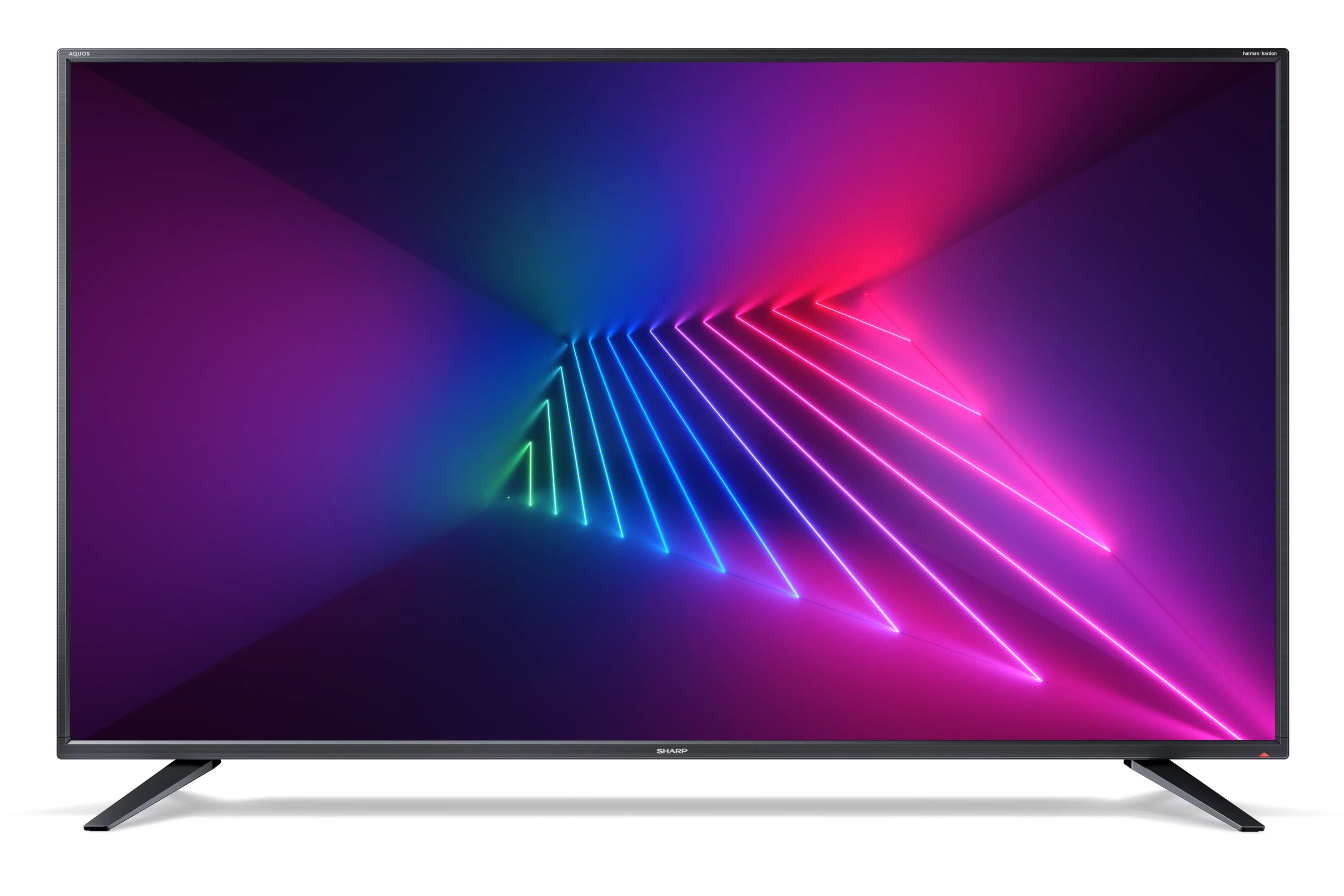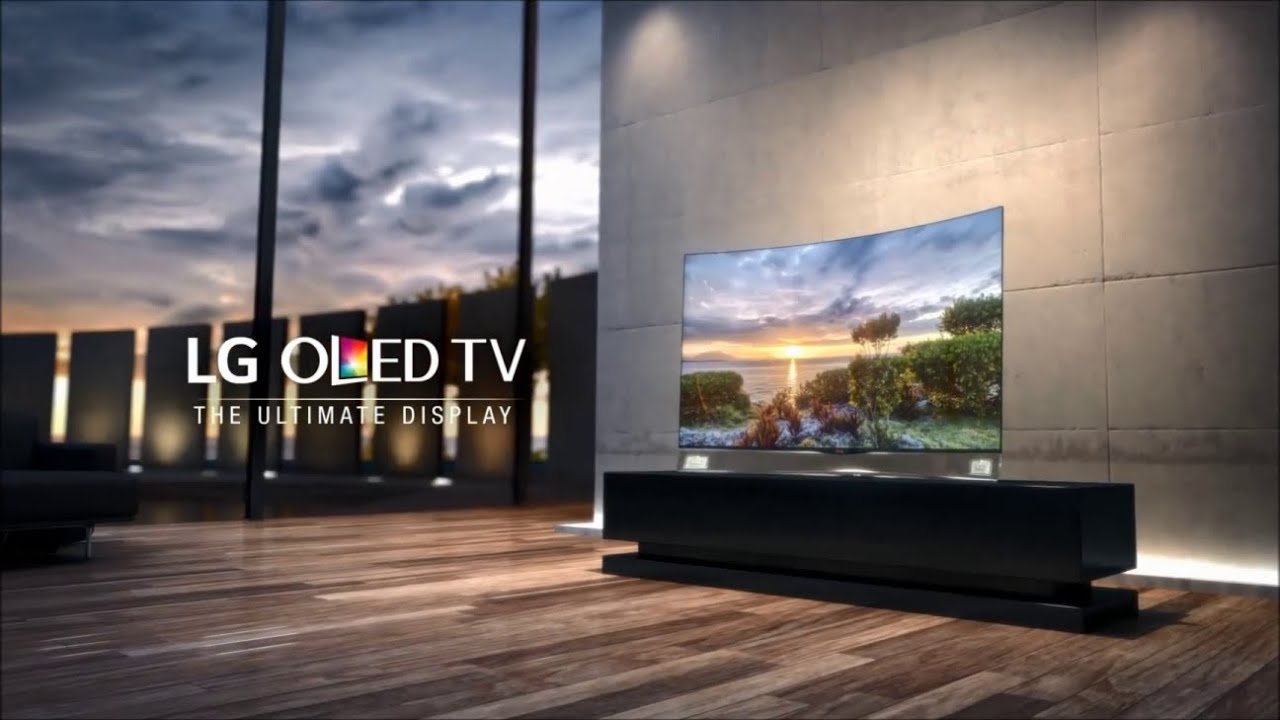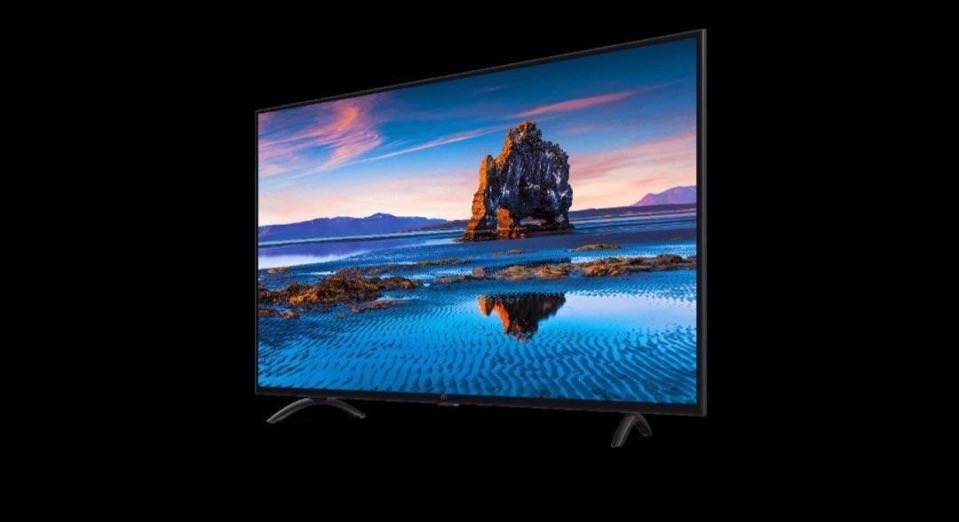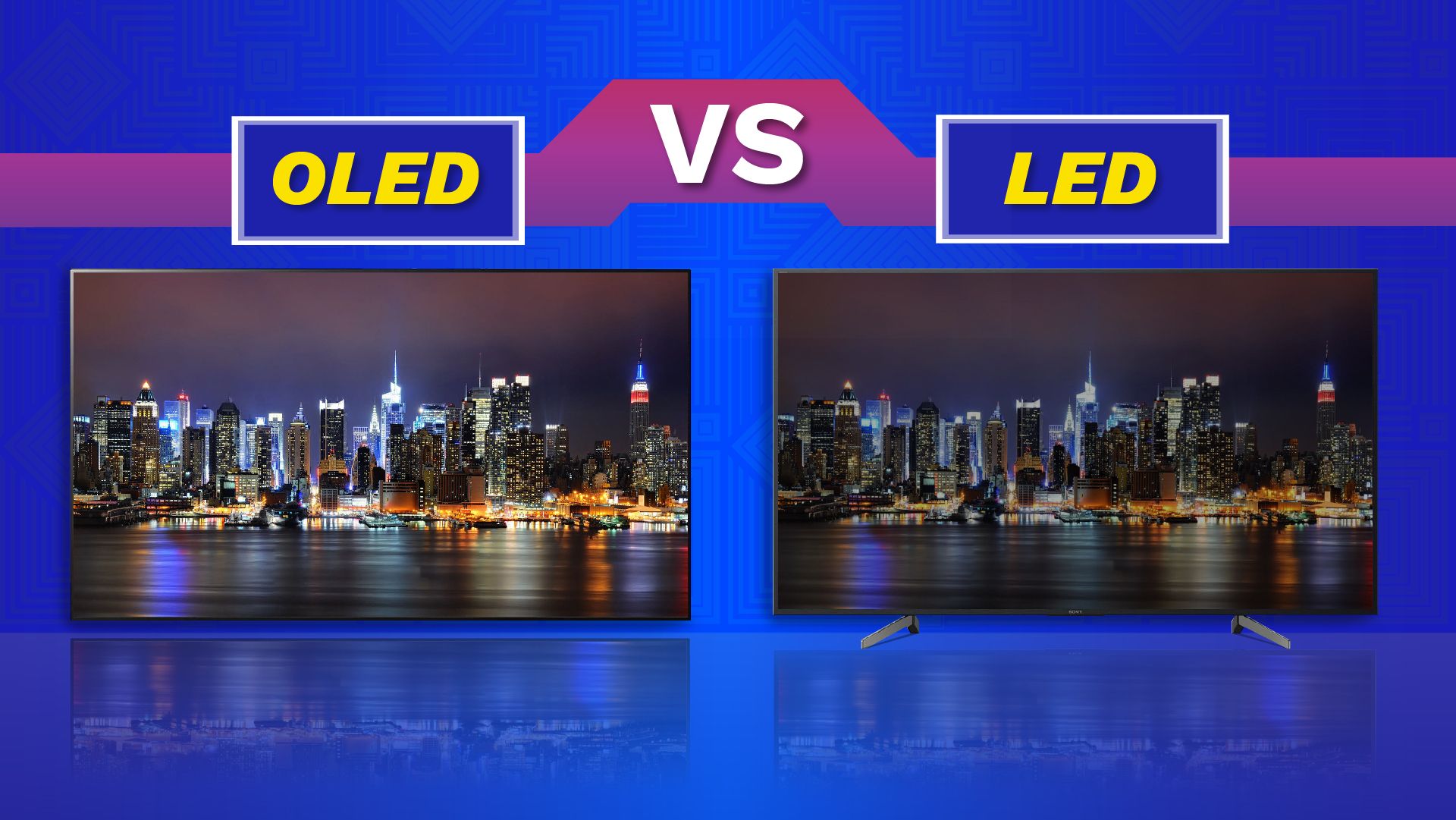Introduction
When it comes to purchasing a new television, consumers are often presented with a myriad of options to choose from. Among the top contenders are LED (Light-Emitting Diode) TVs and OLED (Organic Light-Emitting Diode) TVs. Both types of televisions offer remarkable picture quality and advanced features, but there are significant differences between them. Understanding these differences is crucial in making an informed choice that meets your specific needs and preferences.
LED TVs have become the standard in the industry due to their widespread availability and affordability. They utilize an array of small light-emitting diodes to illuminate the screen. On the other hand, OLED TVs employ organic compounds that self-illuminate when an electric current is passed through them, resulting in exceptional color accuracy and contrast.
In this article, we will explore the distinction between LED TVs and OLED TVs, focusing on various aspects including display technology, picture quality, contrast ratio, viewing angle, refresh rate, energy efficiency, lifespan, and price. By the end, you will have a comprehensive understanding of the strengths and weaknesses of both technologies, allowing you to make an educated decision that suits your budget and viewing preferences.
Let’s dive into the world of LED TVs and OLED TVs and discover the features that set them apart.
LED TV
LED TVs have gained immense popularity in recent years and have become the go-to choice for many consumers. These televisions utilize an array of small light-emitting diodes to illuminate the screen. LED backlighting offers several advantages over traditional LCD TVs, including improved brightness, energy efficiency, and a thinner design.
One of the key benefits of LED TVs is their brightness. LED backlighting allows for greater control over the brightness levels, resulting in vibrant colors and sharper images. This makes LED TVs an excellent choice for well-lit rooms or environments with significant ambient light. Additionally, LED TVs often feature HDR (High Dynamic Range) technology, enhancing the color contrast and providing a more immersive viewing experience.
Another advantage of LED TVs is their energy efficiency. LED technology consumes less power than traditional LCD TVs, leading to cost savings over time and reducing environmental impact. LED TVs are also thinner compared to their LCD counterparts. The slim design not only adds a touch of sophistication to your entertainment setup but also makes it easier to mount the TV on a wall or fit it in a compact space.
LED TVs generally have a longer lifespan than other types of televisions. With proper care, an LED TV can last for many years without any significant degradation in picture quality. This makes LED TVs a reliable long-term investment for those looking for a durable and reliable television.
It’s important to note that LED TVs have certain limitations as well. One of the main drawbacks is their contrast ratio. While LED TVs offer decent contrast, they struggle to achieve the deep blacks and true-to-life contrast that OLED TVs are capable of. This can result in slightly less dynamic and nuanced images, especially in scenes with significant variations in brightness.
In terms of price, LED TVs tend to be more affordable compared to OLED TVs. The widespread availability of LED technology has led to competitive pricing, making it accessible to a wide range of consumers. The affordability, combined with the excellent brightness and energy efficiency, makes LED TVs a popular choice for budget-conscious buyers.
In summary, LED TVs offer a bright and energy-efficient viewing experience with a longer lifespan. While they may not deliver the same level of contrast as OLED TVs, LED TVs still provide impressive picture quality at a more affordable price point. When considering a new television purchase, LED TVs are a compelling option for those seeking a reliable and cost-effective entertainment solution.
OLED TV
OLED (Organic Light-Emitting Diode) TVs have garnered widespread acclaim for their cutting-edge display technology and exceptional picture quality. Unlike LED TVs that use a backlight, OLED TVs employ organic compounds that emit light when an electric current is passed through them. This results in several advantages that set OLED TVs apart from other technology.
One of the standout features of OLED TVs is their unrivaled picture quality. The individual pixels in an OLED display can be turned on or off independently, allowing for perfect black levels and infinite contrast. This results in stunningly sharp and lifelike images, with vibrant colors and deep blacks that bring every scene to life. OLED TVs also offer wider viewing angles, ensuring that the picture quality remains consistent regardless of your viewing position.
The exceptional contrast ratio provided by OLED technology makes these televisions particularly well-suited for watching movies or playing video games with dark or atmospheric scenes. The ability to accurately reproduce deep blacks allows for more details to be seen in shadowed areas, enhancing the overall viewing experience and immersing you in the content.
Another notable advantage of OLED TVs is their fast refresh rate and response time. With OLED technology, each pixel can switch on and off rapidly, resulting in smooth motion and reducing motion blur. This makes OLED TVs ideal for watching fast-paced action sequences or playing fast-moving video games, as there is minimal lag or ghosting.
In addition to their remarkable picture quality, OLED TVs are also energy-efficient. Since OLED pixels generate their own light, there is no need for a backlight, and each pixel consumes power only when it is in use. This leads to lower energy consumption compared to LED TVs, translating to potential electricity savings over time.
While OLED TVs offer an unparalleled viewing experience, they do have a few limitations. One of the main considerations is their relatively shorter lifespan compared to LED TVs. Over time, organic materials in OLED displays can degrade, resulting in potential issues such as burn-in or color shift. However, it’s worth noting that modern OLED TVs incorporate advanced technologies to combat these issues, ensuring longevity and maintaining picture quality.
Due to their advanced display technology and superior performance, OLED TVs tend to be more expensive than LED TVs. The cost of manufacturing OLED panels is higher, leading to higher price tags for consumers. However, prices have been steadily decreasing as the technology becomes more accessible, making OLED TVs a viable option for those seeking top-tier picture quality.
In summary, OLED TVs offer unmatched picture quality with perfect blacks, infinite contrast, and fast response times. They are particularly well-suited for watching movies or playing games with dark scenes. While they may have a shorter lifespan and a higher price point compared to LED TVs, the superior performance and breathtaking visuals make OLED TVs a worthwhile investment for discerning viewers who prioritize picture quality.
Display Technology
The display technology used in LED and OLED TVs is fundamentally different, resulting in distinct characteristics that impact the overall viewing experience. Understanding these differences can help you make an informed decision when choosing the right television for your needs.
LED TVs utilize a backlighting system to illuminate the screen. The backlight consists of an array of small light-emitting diodes (LEDs) positioned behind the liquid crystal display (LCD) panel. These LEDs emit light, which passes through the LCD panel and determines the color and brightness of each pixel. LED TVs can utilize either edge-lit or direct-lit backlighting methods, with the former being more common in thinner models.
OLED TVs, on the other hand, do not require a backlight. The display consists of organic compounds that emit light when an electric current is applied. Each individual pixel in an OLED display can be independently illuminated, resulting in precise control over color and contrast. This self-emitting property of OLED technology enables true black levels, as pixels can be turned off completely, allowing for infinite contrast ratios and exceptional picture quality.
The key difference between LED and OLED display technology lies in their approach to achieving brightness and contrast. LED TVs rely on the backlight, which can result in limitations in achieving deep black levels. Although LED TVs have improved in this aspect with technologies like local dimming, they still cannot match the perfect blacks and infinite contrast offered by OLED TVs.
Furthermore, LED TVs often utilize LCD panels, which can lead to issues such as limited viewing angles and motion blur. LCD panels typically require a layer of liquid crystals to polarize light, and viewing the screen from extreme angles can result in reduced color accuracy and image degradation. On the other hand, OLED TVs offer wider viewing angles, ensuring consistent picture quality regardless of your seating position.
In terms of color accuracy and vibrancy, both LED and OLED TVs can deliver impressive results. LED TVs often employ advanced color-enhancing technologies, such as quantum dots, to expand the color gamut and provide a wider range of vibrant colors. OLED panels inherently offer accurate color reproduction, as each pixel emits its own light, resulting in more precise and lifelike color representation.
When it comes to display technology, LED and OLED TVs each have their strengths. LED TVs excel in brightness, offer competitive color reproduction, and are generally more affordable. On the other hand, OLED TVs provide unparalleled black levels, infinite contrast, wider viewing angles, and exceptional color accuracy. Your decision ultimately depends on your priorities and preferences, whether you value brightness and affordability or prioritize superior picture quality and viewing experience.
Picture Quality
When it comes to the picture quality, both LED and OLED TVs offer impressive visuals, but there are notable differences between the two technologies that affect the overall viewing experience.
LED TVs deliver vibrant and bright images, thanks to their backlighting system. LED backlights allow for high levels of brightness, resulting in a vivid display that is especially suited for well-lit environments. LED TVs often incorporate technologies like local dimming, where specific zones of the backlight can be independently controlled to enhance contrast in different areas of the screen. This feature improves overall picture quality, particularly in scenes with a mix of bright and dark elements.
OLED TVs, however, surpass LED TVs when it comes to picture quality, specifically in producing deep blacks and achieving high contrast ratios. Due to their self-emitting nature, OLED pixels can individually turn off completely, resulting in true blacks that add depth and richness to the image. This capability allows OLED TVs to display fine details in shadowed areas and deliver an immersive viewing experience. The infinite contrast ratio of OLED technology ensures vibrant colors and a more nuanced representation of picture elements, resulting in a more lifelike image.
Another aspect where OLED TVs excel is in color accuracy. Since each pixel in OLED panels emits its own light, the colors displayed are more precise and true-to-life. OLED TVs can reproduce a wide range of colors with precision, resulting in stunningly realistic and vibrant visuals. LED TVs, while capable of producing impressive color reproduction, may rely on additional technologies like quantum dots to enhance color gamut and deliver a broader range of vivid hues.
Furthermore, OLED TVs offer wider viewing angles compared to LED TVs. With OLED displays, you can enjoy consistent picture quality and accurate colors from almost any angle, making them ideal for gatherings or larger viewing spaces. LED TVs, on the other hand, can experience color shifting and diminished image quality when viewed from extreme angles.
It is worth noting that LED TVs have made significant advancements in picture quality over the years, with models incorporating features like HDR (High Dynamic Range) and local dimming to enhance contrast and improve color accuracy. While they may not match the pixel-level control and the deep blacks of OLED technology, LED TVs can still deliver impressive visuals that meet the expectations of many viewers.
In summary, both LED and OLED TVs offer great picture quality, but OLED TVs generally excel in producing deep blacks, infinite contrast, and accurate colors. The self-emitting nature of OLED technology allows for more detailed and lifelike images. LED TVs, on the other hand, provide vibrant and bright visuals, often with advanced features like HDR and local dimming, at a more affordable price point. Your choice ultimately depends on your priorities, whether you value exceptional contrast and color accuracy or prefer a brighter display within a certain budget.
Contrast Ratio
The contrast ratio is a crucial aspect of picture quality that determines the distinction between the brightest whites and the darkest blacks on a television screen. Both LED and OLED TVs have different capabilities when it comes to contrast, which significantly impacts the overall viewing experience.
LED TVs typically achieve contrast through their backlighting system. They use a backlight to illuminate the LCD panel and control the amount of light that passes through each pixel. LED TVs employ various techniques like local dimming to dynamically adjust the backlight intensity in different areas of the screen, enhancing contrast and improving black levels. While this approach can result in decent contrast ratios, LED TVs still struggle to match the deep blacks and infinite contrast offered by OLED technology.
OLED TVs, on the other hand, deliver unparalleled contrast ratios. Each pixel in an OLED display emits its own light, allowing for precise control over the brightness of individual pixels. When a pixel is turned off completely, it produces true blacks since it does not emit any light. This ability to achieve perfect black levels creates a stark contrast against vibrant colors, resulting in stunning visuals and enhancing the overall picture quality. The infinite contrast ratio of OLED technology ensures a more lifelike representation of images with greater depth and detail.
High contrast ratios offer several benefits for viewers. They allow for a wider range of color saturation and enhance the overall image quality. Scenes featuring a mix of bright and dark elements will appear more balanced, with clearer details in shadowed areas. This is particularly noticeable in movies or TV shows that heavily rely on low-light and atmospheric scenes.
While LED TVs have made advancements in improving contrast, especially with the implementation of local dimming, they still fall short of the superior contrast capabilities of OLED TVs. LED TVs may struggle to achieve true blacks due to the limitations of the backlighting system, resulting in less dynamic and nuanced images compared to OLED displays.
It’s important to note that contrast ratio alone is not the sole determinant of picture quality. Other factors such as color accuracy, brightness, and viewing angles also contribute to the overall visual experience. However, a high contrast ratio is integral to achieving a more immersive and captivating viewing experience, as it allows for greater depth and realism in the displayed content.
In summary, contrast ratio plays a crucial role in determining picture quality. OLED TVs, with their ability to produce perfect blacks and infinite contrast, outshine LED TVs in this aspect. Despite advancements in LED technology, OLED displays offer superior contrast capabilities, resulting in more vibrant colors, enhanced details, and a more realistic viewing experience.
Viewing Angle
The viewing angle of a television refers to the range at which the picture quality remains consistent and accurate when viewed from different positions. Both LED and OLED TVs have varying viewing angles, which can impact the overall viewing experience depending on the seating arrangement and the size of the viewing area.
LED TVs, particularly those using LCD panels, often have limitations when it comes to viewing angles. The liquid crystals in LCD panels have a polarizing effect on light, which can result in reduced color accuracy and image degradation when viewed from extreme angles. As a result, the picture quality may appear washed out or distorted, with colors appearing less vibrant and accurate. This can be problematic for larger viewing spaces or gatherings where viewers are seated at different angles to the screen.
OLED TVs, on the other hand, offer wider viewing angles compared to LED TVs. With their self-emitting pixels, OLED displays provide consistent picture quality and color accuracy even when viewed from different positions. This makes OLED TVs particularly suitable for rooms with multiple seating arrangements or larger spaces where viewers may not always be directly in front of the screen.
Wider viewing angles provided by OLED TVs ensure that everyone in the room can enjoy the same high-quality visuals, regardless of their seated position. Whether you are watching a movie or playing a game, the picture quality and color representation remain consistent, allowing everyone to have an immersive viewing experience.
It’s important to note that while OLED TVs offer superior viewing angles, there still can be some minor shifts in picture quality when viewed from extreme angles. However, the difference is relatively minimal compared to LED TVs, ensuring a significantly better viewing experience for most viewers regardless of their seated position.
Viewing angle preferences can vary depending on the specific viewing environment and personal preferences. For smaller rooms with a limited number of viewers or a centered seating arrangement, the viewing angle may not be as critical of a factor. In such cases, the limitations of LED TVs may not be as noticeable or impactful.
In summary, OLED TVs provide wider viewing angles compared to LED TVs, ensuring consistent picture quality and color accuracy from different seated positions. The ability to enjoy the same high-quality visuals regardless of the viewing angle enhances the overall viewing experience, making OLED TVs an excellent choice for larger viewing spaces, gatherings, or situations where viewers are seated at different positions.
Refresh Rate and Response Time
The refresh rate and response time of a television are essential elements that contribute to the overall motion clarity and smoothness of the displayed content. Both LED and OLED TVs differ in these aspects, which can impact the viewing experience, particularly when watching fast-paced action scenes or playing video games.
The refresh rate refers to the number of times per second that the image on the screen is refreshed. It is measured in Hertz (Hz). A higher refresh rate results in smoother motion and reduces motion blur. LED TVs typically offer a range of refresh rate options, with most modern models having a standard refresh rate of 60Hz or higher. Some LED TVs also incorporate motion interpolation technologies, such as Motionflow or TruMotion, which create additional frames to enhance motion clarity.
OLED TVs, on the other hand, have an inherent advantage when it comes to refresh rate. Each pixel in an OLED display has the ability to switch on and off rapidly, resulting in a near-instantaneous response time. This, in turn, allows for smoother motion and reduced motion blur, especially for fast-moving scenes. OLED TVs can achieve exceptional refresh rates, often ranging from 120Hz to 240Hz, delivering a more fluid and lifelike viewing experience.
Response time refers to the time it takes for a pixel to transition from one color to another. It is crucial in minimizing motion blur and ghosting, which can occur when pixels are unable to transition quickly enough. LED TVs typically have faster response times compared to OLED TVs, thanks to advancements in LCD panel technology. This is particularly beneficial for gaming or watching action-packed content, as it ensures sharper and more detailed images during fast-paced motion.
While OLED TVs have slightly slower response times compared to LED TVs, the difference is often negligible for most viewers. The exceptional contrast and deep black levels provided by OLED technology significantly mitigate the impact of any potential response time limitations, resulting in a visually pleasing experience overall.
It’s also worth noting that some LED TVs offer features like black frame insertion (BFI) or motion interpolation to reduce motion blur and enhance the viewing experience. These technologies can improve motion clarity and reduce the perception of blur, even in LED TVs with standard refresh rates.
In summary, OLED TVs typically offer higher refresh rates and have excellent response times, resulting in smoother motion and reduced motion blur. LED TVs, on the other hand, have a wide range of refresh rate options and faster response times, thanks to advancements in LCD panel technology. Both technologies have their strengths in delivering an enjoyable viewing experience, especially when it comes to fast-moving content or gaming, but OLED TVs tend to have a slight edge in terms of overall motion clarity.
Energy Efficiency
Energy efficiency is an important aspect to consider when choosing a television. Not only does it help reduce electricity consumption and lower utility bills, but it also has a positive impact on the environment. LED and OLED TVs differ in their energy efficiency capabilities, which can influence your decision-making process.
LED TVs are known for their energy-efficient operation. LED technology utilizes light-emitting diodes to illuminate the screen, and these LEDs consume less power compared to traditional LCD TVs. LED TVs often have backlighting systems that can be adjusted to control the brightness of the display, allowing for more efficient energy consumption. This means that even with high brightness levels, LED TVs can still have lower energy requirements compared to other types of televisions.
In recent years, energy-saving features have become more prevalent in LED TVs. Manufacturers have incorporated technologies like ambient light sensors, which adjust the screen brightness based on the surrounding lighting conditions. This not only enhances the viewing experience but also helps save energy by reducing unnecessary power consumption.
OLED TVs also have energy-efficient qualities. Since each pixel in an OLED display produces its own light, there is no need for a backlight. This eliminates the energy consumption associated with backlighting in LED TVs. OLED TVs consume power only for the pixels that are turned on, resulting in reduced energy usage and potential cost savings over time.
It’s important to note that while OLED TVs are generally more energy-efficient in terms of power consumption, they may consume more energy during bright scenes compared to LED TVs. This is because individual OLED pixels emit light at their maximum capacity when displaying bright white or colorful images. On the other hand, LED TVs with advanced backlight technologies and energy-saving features may be more efficient during bright scenes, but they consume more power overall due to the required backlighting.
In terms of energy efficiency ratings, LED TVs are typically more widely available and varied in terms of energy-saving capabilities. ENERGY STAR certified LED TVs are available in the market, indicating that they meet certain energy efficiency criteria set forth by the U.S. Environmental Protection Agency (EPA). These certified LED TVs have been designed to deliver substantial energy savings without compromising on performance or picture quality.
In summary, both LED and OLED TVs offer energy-efficient options, but the level of efficiency differs between the two technologies. LED TVs, with their backlighting systems and energy-saving features, are generally more widely available and can deliver excellent energy efficiency ratings. OLED TVs, on the other hand, consume less power overall due to their self-emitting pixels, making them an energy-efficient choice for those seeking advanced picture quality with reduced energy consumption.
Lifespan
The lifespan of a television is an important consideration when making a purchase, as it determines the longevity and durability of the device. Both LED and OLED TVs have different characteristics in terms of their lifespan, which can impact your decision-making process.
LED TVs are known for their long lifespan. LED technology itself is very durable and reliable, allowing LED TVs to last for many years without any significant degradation in picture quality. With proper care, an LED TV can easily provide a lifespan of over 100,000 hours of use. This equates to several years of continuous operation or many more years of typical viewing habits.
However, it’s important to note that the lifespan of an LED TV can also depend on other factors. For instance, the quality of components used, the brand reputation, and the operating conditions can all play a role in the longevity of the TV. Additionally, LED TVs with advanced features like local dimming may require more maintenance over time to ensure optimal performance.
OLED TVs, on the other hand, have a slightly shorter lifespan compared to LED TVs. While the organic materials in OLED displays can degrade over time, resulting in potential issues such as burn-in or color shift, modern OLED TVs have made significant advancements to mitigate these concerns. Manufacturers have implemented technologies to help prevent burn-in, such as pixel shifting and screen savers, while also improving the overall performance and longevity of OLED panels.
The average lifespan of an OLED TV can vary depending on usage and individual circumstances. With regular usage, an OLED TV can be expected to last around 50,000 hours, which is still sufficient for many years of typical viewing. It’s worth noting that this lifespan estimate is based on standard usage patterns and may vary depending on factors such as brightness levels, content type, and usage duration.
It is essential to consider that advancements in technology continually improve the lifespan of both LED and OLED TVs. Manufacturers strive to enhance the overall durability and longevity of their products through ongoing research and development.
In summary, LED TVs have a longer lifespan compared to OLED TVs, often lasting over 100,000 hours of use. They are known for their durability and reliability, making them a long-term investment. While OLED TVs have a slightly shorter lifespan of around 50,000 hours, advancements in technology have improved their longevity and reliability. Ultimately, both LED and OLED TVs offer a lifespan that meets the expectations of most consumers, allowing for years of enjoyment before considering an upgrade.
Price
Price is a significant consideration for many when it comes to purchasing a new television. LED and OLED TVs differ in terms of their price points, making it important to find a balance between budget and desired features.
LED TVs are widely available and generally more affordable compared to OLED TVs. The widespread adoption of LED technology has led to competitive pricing, making LED TVs accessible to a wide range of consumers. LED TVs come in a variety of sizes and models, allowing for flexibility within different price ranges. The affordability of LED TVs makes them a popular choice for those on a budget or looking for a cost-effective option without compromising on picture quality.
OLED TVs, on the other hand, tend to be more expensive compared to LED TVs. The manufacturing process of OLED panels is more complex and costly, leading to higher price tags for consumers. The premium price is due to the superior picture quality and advanced features offered by OLED technology. OLED TVs boast vibrant colors, deep blacks, infinite contrast, and wider viewing angles, which create an immersive and visually stunning experience. However, it’s important to note that as technology advances and OLED becomes more prevalent, prices have been gradually decreasing, making OLED TVs more accessible to a wider range of consumers.
When considering the price of a television, it’s also essential to factor in long-term cost savings. LED TVs are known for their energy efficiency, consuming less power compared to other types of televisions. This can result in lower electricity bills over time, making LED TVs more cost-effective in terms of operating expenses. OLED TVs, while initially more expensive, can also offer potential long-term savings due to their energy-efficient nature.
Additionally, it’s worth considering the value for money that each type of television provides. LED TVs offer an affordable entry point with impressive picture quality and a wide variety of features. For those seeking a solid viewing experience within a certain budget, LED TVs are a compelling option. OLED TVs, while pricier, provide top-tier picture quality and advanced features that can significantly enhance the overall viewing experience. The premium price is justified by the immersive visuals and stunning image quality they deliver.
In summary, LED TVs are generally more affordable compared to OLED TVs, making them a popular choice for budget-conscious consumers. LED TVs offer good value for money, with competitive pricing and impressive picture quality. On the other hand, OLED TVs come at a premium price but offer superior picture quality, deep blacks, infinite contrast, and wider viewing angles. The cost of an OLED TV is justified by the immersive viewing experience and advanced features it provides. Ultimately, the choice between LED and OLED TVs depends on budget constraints and the level of picture quality and features desired by the consumer.
Conclusion
Choosing between LED and OLED TVs ultimately comes down to personal preferences, budget, and specific viewing needs. LED TVs offer a bright and energy-efficient viewing experience with a longer lifespan. They are more widely available and affordable, making them a popular choice for many consumers. LED TVs excel in brightness, competitive color reproduction, and are compatible with a wide range of screen sizes.
OLED TVs, on the other hand, provide unparalleled picture quality with their perfect blacks, infinite contrast, and wider viewing angles. They deliver a more immersive and lifelike viewing experience, particularly for movie enthusiasts or gamers. OLED technology offers exceptional color accuracy, enhanced motion clarity, and superior image depth.
It’s important to consider factors such as display technology, picture quality, contrast ratio, viewing angle, refresh rate, energy efficiency, lifespan, and price when making a decision. LED TVs are a reliable and cost-effective choice, suitable for those seeking a balance between performance and affordability.
OLED TVs, while more expensive, offer top-tier picture quality and advanced features for those who prioritize a stunning visual experience. They are recommended for viewers who want the best of the best and are willing to invest in superior technology.
Ultimately, when deciding between LED and OLED TVs, carefully evaluate your needs, preferences, and budget constraints. Consider factors like room lighting, desired picture quality, viewing angles, and specific use cases, be it gaming, movie watching, or casual TV viewing. By understanding the differences in technology and considering your personal priorities, you can make an informed choice and find the perfect television to elevate your entertainment experience.







